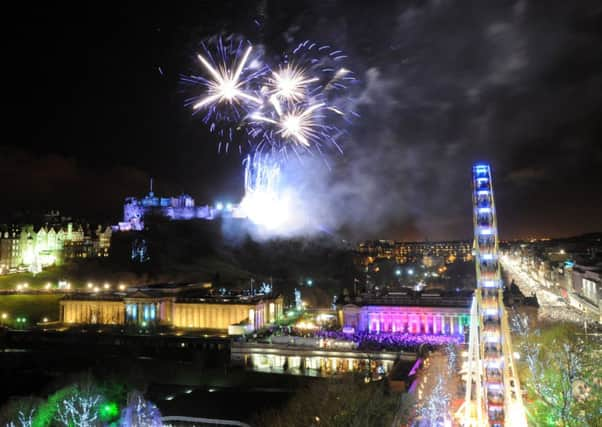Leaders: Edinburgh’s Hogmanay | Climate change


What was once a spontaneous yet rather modest gathering at the Tron Kirk has been transformed into the world’s New Year party of choice, attracting tens of thousands of people from England and abroad, and earning Scotland £30 million annually in the process. However, while respecting this achievement, there are worrying signs that Edinburgh’s Hogmanay events are becoming too commercialised and too expensive, robbing the occasion of some its magic and communal spirit.
This year, 10,000 tickets for the Princes Street party – the heart and soul of the celebrations – went unsold. This came after the individual ticket price rocketed by £5, to £20 a head. The organisers contend that this is still very cheap to enjoy the justly famous fireworks display over Edinburgh Castle. But the customers are voting with their feet and – to use the old phrase – the customer is always right. The 10,000 revellers who boycotted Princes Street this year did not go to bed early – they went somewhere else. This New Year was mild and conditions were perfect for watching the fireworks. The clock ticking the seconds to 2014 heralded one of the most portentous years Scotland has ever celebrated. What kept folk away from Princes Street? Answer: the tickets were over-priced. That is a warning Edinburgh Council and the Hogmanay organisers must heed.
Advertisement
Hide AdAdvertisement
Hide AdEdinburgh’s Hogmanay is in danger of confusing scale with quality. As the number of events in the capital at New Year has exploded, so too have the prices. The high cost of rides and participation events in Princes Street Gardens has rightly attracted a lot of public criticism. New Year is, after all, a family event and one that falls just after Christmas. We also need to remember that Edinburgh’s Hogmanay customers, local and visitor alike, are not immune to the economic crisis. It is little wonder that people are seeking out places to watch the fireworks for free rather than fork out £20 a head for the privilege. For instance, in the past few years Portobello has spontaneously hosted its own (free) New Year beach party – complete with bonfires and barbecues – to view the ring of firework displays that now surround the Firth of Forth. Well done Portobello.
Edinburgh Council should commission a thorough review of the 2013 Hogmanay celebrations, with a view to assessing commercial content and future pricing structure. The issue is not that the official New Year events are of poor quality. No-one can deny that they provide a profile for Edinburgh of truly global dimensions. But Edinburgh’s Hogmanay must be price-sensitive if it is to prosper. Above all, it must retain the spontaneity and community spirit from which it was created two decades ago.
Climate change still a big challenge
IT is not often politicians get praised for their environmental credentials, but the Scottish Government has just earned plaudits from the World Wildlife Fund for slashing its annual business flights by 28 per cent – thereby knocking 650 tonnes off its CO2 emissions and (nice one) saving the taxpayer nearly £600,000 a year. Sensibly, flights have been replaced by cutting down on meetings and using video conferencing.
The UK private sector is also following suit – business flights by companies are down 13 per cent since 2000. Unfortunately, UK government departments are reticent about publishing flying statistics. But it is on record that the number of flights by Scotland Office ministers and civil servants rose between 2010 and 2012, from 252 to 307. There is a case for the Scotland Office to invest in video conferencing equipment.
The Scottish Government can be rightly proud of cutting down on unnecessary airline travel. But the scale of the global climate crisis is too vast for it to rest on its political laurels. For the past two years the First Minister has had to report that the Scottish Government has failed to meet its overall carbon reduction targets. It is true that Scotland’s CO2 reductions are some of the highest in the industrial world, but missing annual targets is bad because it leads to cynicism and distrust.
The SNP government has also adopted exceptionally high targets for future years – a political hostage to fortune when bad winters occur. In addition, the SNP advocates cutting the air passenger duty, which could increase rather than decrease flying. All of which says that tackling climate change remains a complex business, with no easy shortcuts.